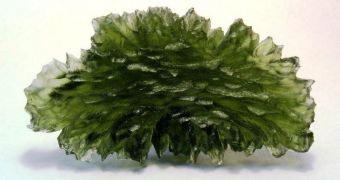A group of scientists from the University of Michigan in Ann Arbor announces the creation of the world's smallest pump. The minute device is no larger than a human red blood cell, but it can function fairly effectively, when considering its size. The power supply for this instrument is ensured by an electrode that is designed in an unorthodox manner. It is made out of glass, a material that is famous for not readily conducting electricity, Nature News reports.
However, some time ago, researchers discovered that glass was actually one of the few materials that could conduct electricity at the nanoscale. There are numerous types of materials, including wood, glass and plastic, which do not readily allow electricity to pass through. However, some do change their properties once they are miniaturized to the nanoscale. Glass is a very good example. When extremely small, it no longer gets adversely affected by currents passing through at high voltage. For the new work, the UM team built a very narrow tunnel in a piece of glass, by using laser light.
The end-result of this effort was obtaining a narrow opening in the material that ended in a very thin glass wall at one end. “When you go down to the nanoscale, the world doesn't behave as we're used to,” UM expert Alan Hunt, who has been the leader of the new investigation, explains. He says that, by filling the carved channel with an electrically conducting solution, researchers can turn the piece of glass into what could best be described as a “liquid wire.” In this setup, the walls of the tunnel act like electrodes.
This type of electrode was successfully used in a new investigation, where researchers managed to provide sufficient power to the smallest pump ever constructed. The device features three 0.6-micrometer-wide channels, and has a diameter of about four micrometers. According to the UM team, the pump is capable of controlling the flow of no less than one-thousandth of one-trillionth of a liter per second. Producing such pumps in large numbers could have beneficial effects for medicine and bioengineering, experts say.

 14 DAY TRIAL //
14 DAY TRIAL //